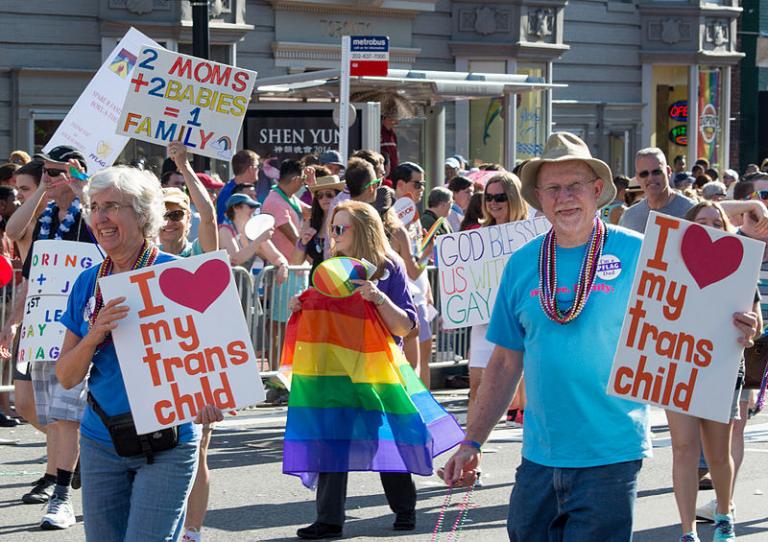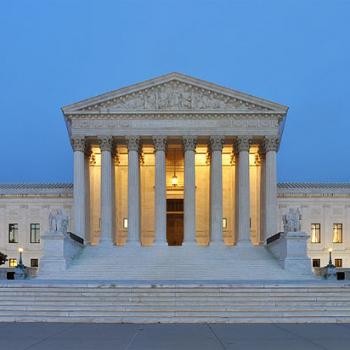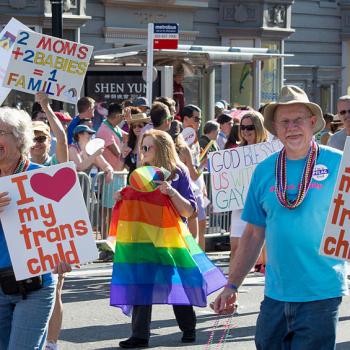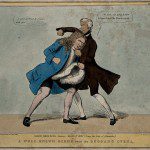
At the National Review yesterday, “Autistic Children Pushed to Become Transgender?” which itself links to a report in the Daily Mail, “School has SEVENTEEN children changing gender as teacher says vulnerable pupils are being ‘tricked’ into believing they are the wrong sex.”
Yes, it’s the Daily Mail. But I don’t have any reason to believe that they are misreporting the facts when they say this:
An astonishing 17 pupils at a single British school are in the process of changing gender, The Mail on Sunday can reveal.
Most of the youngsters undergoing the transformation are autistic, according to a teacher there, who said vulnerable children with mental health problems were being ‘tricked’ into believing they are the wrong sex.
The whistleblower says few of the transgender children are suffering from gender dysphoria – the medical term for someone who feels they were born in the wrong body – but are just easily influenced, latching on to the mistaken belief they are the wrong sex as a way of coping with the problems caused by autism.
Earlier this year, The Mail on Sunday revealed that a third of youngsters referred to the NHS’s only gender identity clinic for children showed ‘moderate to severe autistic traits’.
It means that 150 autistic teenagers were given puberty blocker drugs which stop the body maturing.
The article further reports that these students are able to claim transgenderness without their parents’ knowledge and that “transgender children at the school are idolised by other pupils.”
The teacher further reports that
They wear identical clothing and hairstyles and often adopt the names of transgender YouTube stars. She has also witnessed first-hand how older pupils have persuaded younger ones with autism that they, too, were born the wrong sex – a process she has likens to ‘grooming’.
‘They are just young people with mental health problems who have found an identity and want to be part of a group of like-minded people,’ she said.
The entire article is disturbing, reporting that teens are latching onto transgenderism as a “cure” for mental health issues and adults and professionals are affirming them in their self-diagnosis rather than treating their underlying problems. To what extent it’s because the prevailing orthodoxy prohibits questioning a child’s self-identification, and to what extent it’s because administering puberty-blockers and ultimately moving on to cross-sex hormones and surgical procedures appears to be a more concrete, “scientific” solution instead of helping teens with autism or other mental health or neurological differences overcome their difficulties, I can’t say.
In the same way, the prevailing wisdom is that transgender folk are at risk of suicide due to their suffering of discrimination by society, as well as their unhappiness with their bodies, either before surgery, or if they deem the surgery to be unsatisfactory ( (hence, the rush to “treat” young people as soon as possible, so that would-be women can avoid the masculine appearance that comes with male puberty). But (and, as usual, I apologize for the lack of a link) I have read on multiple occasions that, especially with respect to teens, the claim to be transgender appears to come about in reaction to anxiety over the changes of the teen years; ascribing a generalized sense of discomfort to “being in the wrong body” is an answer that brings about affirmation as a heroic fighter for rights (an especially powerful affirmation, even if it’s mostly a self-affirmation, in a time when “fighter for rights” is a more powerful accolade than “helper of the poor or disabled,” for instance), as opposed to the alternative of just being a “weirdo.”
It’s also concerning that this is occurring at a time when teens are particularly influenced by social media and their online worlds, and the way that they relate to each other and to the outside world has so radically changed. As observed by Jean Twenge in her book iGen, teens are far less likely to get together after school to socialize, less likely to have afterschool jobs, or get their drivers’ licenses, and far more likely to report anxiety or depression, than prior generations. Teens’ exposure to porn appears to both result in less sex and, at the same time, warped expectations by teen and young adult boys about what sex should be like (and, sadly, an acceptance by teen and young adult women of unpleasant sexual experiences because they think they’re “supposed to” do it). Teens seem in general less comfortable with their bodies — reports are that, in general, teen boys and girls are more modest, say, in changing rooms. It would almost seem more odd for these increasing incidents of transgender declaration to be unconnected to these social changes, than to have some relationship to them.
How far does this go? Where does this end? A new generation of students is being taught that one’s relative sense masculinity and femininity defines one’s sex/gender, and it’s understandable that students who don’t feel “typically masculine” or “typically feminine” would be led to believe that, according to the definitions they’ve been given, their “gender” (and their sex) is not, after all, male or female, rather than understanding that (with due acknowledgement for intersex folk) one’s chromosomes determine one’s sex, and it’s immaterial whether you’re flat-chested or busty, or whether you like or are indifferent to makeup. And this is not just some trivial thing, but a new world that our children are being thrust into without any idea where it leads — except that it seems to be part and parcel of broader social trends in which young adults struggle to form the sorts of romantic relationships that older generations take for granted, as highlighted in an article in The Atlantic which I have every intention of commenting about in a late blog post.
Image: https://commons.wikimedia.org/wiki/File:PFLAG_of_the_Lower_Shenandoah_07_-_DC_Capital_Pride_-_2014-06-07.jpg; Tim Evanson [CC BY-SA 2.0 (https://creativecommons.org/licenses/by-sa/2.0)], via Wikimedia Commons












